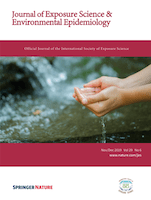
Journal of Exposure Science and Environmental Epidemiology
Scope & Guideline
Unraveling the Complexities of Exposure Science
Introduction
Aims and Scopes
- Human Exposure Assessment:
The journal emphasizes various methods for assessing human exposure to environmental pollutants, including personal monitoring techniques, biomonitoring, and the use of innovative technologies such as wearable sensors. - Environmental Epidemiology:
Research published in the journal often investigates the relationships between environmental exposures (air pollution, water contaminants, etc.) and health outcomes, providing insights into how these exposures contribute to disease risk. - Cumulative and Mixture Exposures:
There is a strong focus on studying the health impacts of multiple exposures, including chemical mixtures and their cumulative effects on populations, which is crucial for understanding real-world exposure scenarios. - Vulnerable Populations:
The journal highlights studies that examine environmental health disparities, particularly among vulnerable populations, to inform policies aimed at reducing these inequalities. - Emerging Contaminants and Technologies:
The journal covers new and emerging environmental contaminants, including PFAS and microplastics, and promotes research on novel technologies for exposure assessment and risk management. - Public Health Implications:
Research findings are often linked to public health strategies, emphasizing the importance of translating exposure science into effective interventions and policies.
Trending and Emerging
- Health Effects of Climate Change:
Research examining the health impacts of climate change, including heat exposure, air quality deterioration, and extreme weather events, is increasingly prominent as these issues become more pressing in public discourse. - Microbiome and Environmental Exposures:
Emerging studies are starting to explore the connections between environmental exposures and human microbiome health, indicating a growing interest in how these factors interact. - Technological Innovations in Exposure Assessment:
There is a rising trend in utilizing advanced technologies, including machine learning and mobile sensors, to enhance exposure assessment and monitoring, reflecting a shift towards more precise and real-time data collection. - Environmental Justice and Health Disparities:
The journal increasingly emphasizes studies that address environmental justice issues, focusing on how socio-economic factors influence exposure risks and health outcomes. - Plastics and Environmental Health:
Research on the health impacts of plastic pollution, including microplastics and chemical additives, is gaining attention, highlighting the need for understanding their role in human health. - Integration of Multi-Disciplinary Approaches:
Emerging themes reflect a trend towards integrating diverse scientific disciplines, including toxicology, epidemiology, and social sciences, to better understand complex exposure scenarios and health outcomes.
Declining or Waning
- Traditional Chemical Risk Assessments:
There has been a noticeable shift away from traditional risk assessment methodologies that focus solely on single chemicals, as the field increasingly recognizes the complexities of multiple and cumulative exposures. - Historical Environmental Exposures:
Research focusing on historical exposure assessments may be declining, as contemporary studies prioritize current and emerging exposures that pose immediate public health concerns. - Occupational Exposure Studies:
Though still relevant, there is a decreasing emphasis on studies solely examining occupational exposures compared to broader environmental exposure contexts, which include residential and community settings. - Narrowly Defined Populations:
Research that targets very specific populations (e.g., certain industries or geographic areas) may be less frequent, as the journal increasingly emphasizes studies with broader applicability and implications for diverse populations. - Static Exposure Models:
The use of static models for assessing exposure may be declining in favor of more dynamic, real-time exposure assessment approaches that account for variations over time and space.
Similar Journals
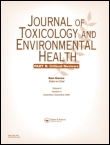
JOURNAL OF TOXICOLOGY AND ENVIRONMENTAL HEALTH-PART B-CRITICAL REVIEWS
Advancing understanding in toxicology and environmental health.Welcome to the JOURNAL OF TOXICOLOGY AND ENVIRONMENTAL HEALTH-PART B-CRITICAL REVIEWS, a prestigious publication under TAYLOR & FRANCIS INC based in the United Kingdom. With an impressive impact factor and ranked in the Q1 category for both Health, Toxicology and Mutagenesis, and Toxicology, this journal provides critical insights into the fields of toxicology and environmental health. Since its inception in 1998, it has become a key resource for researchers, professionals, and students, offering rigorous peer-reviewed articles that synthesize and critically appraise current knowledge in the discipline. The journal is recognized globally, ranking #5 in Toxicology and #12 in Environmental Science according to Scopus, highlighting its crucial role in advancing research and understanding in these essential areas. The journal also embraces open access options, making it easier for a broader audience to access vital research findings. Engage with the latest developments and critical analyses that are shaping the future of environmental health and toxicology by exploring our comprehensive collection of reviews and articles.
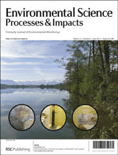
Environmental Science-Processes & Impacts
Empowering voices in environmental science and policy.Environmental Science-Processes & Impacts is a premier journal published by the Royal Society of Chemistry, focusing on critical research in the field of environmental science. With ISSN 2050-7887 and E-ISSN 2050-7895, this journal has established itself as an authoritative source of knowledge since its inception in 2012, maintaining a remarkable Q1 quartile ranking across significant categories such as Environmental Chemistry, Management, Monitoring, Policy and Law, Medicine, and Public Health for the year 2023. It stands as an essential resource for professionals, researchers, and students, aimed at advancing scientific understanding and solutions to pressing environmental issues. With impressive ranks in Scopus, including #45 in Public Health and #27 in Environmental Chemistry, the journal provides a platform for impactful research and interdisciplinary collaboration, emphasizing open access to foster the dissemination of knowledge globally. Join a community committed to exploring the interconnectedness of environmental processes and their implications for society by contributing to or learning from cutting-edge studies published in this esteemed journal.
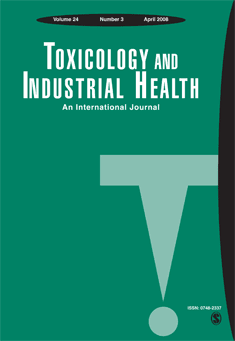
TOXICOLOGY AND INDUSTRIAL HEALTH
Advancing knowledge in toxicology for a safer industrial future.TOXICOLOGY AND INDUSTRIAL HEALTH, published by SAGE PUBLICATIONS INC, is a premier journal in the field of toxicology, public health, and environmental health, with a significant history dating back to 1985. With its ISSN 0748-2337 and E-ISSN 1477-0393, the journal provides a platform for disseminating groundbreaking research and comprehensive reviews that address the complexities of toxic substances in industrial and occupational settings. Despite its Q3 ranking among peers in health, toxicology, and public health, this journal is becoming increasingly influential, reflected in its growing citation metrics. Researchers and professionals benefit from its commitment to fostering knowledge in both theoretical and practical contexts, making it an essential resource for those dedicated to advancing understanding in this vital field. The journal's main objectives include promoting research addressing the implications of toxicology on health and safety standards across industries, ensuring accessibility to current studies for a global audience. Overall, TOXICOLOGY AND INDUSTRIAL HEALTH plays a critical role in bridging the gap between research and real-world applications, proving invaluable to students, professionals, and researchers alike in their pursuit of enhancing public health and environmental safety.
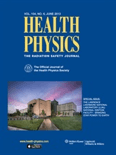
HEALTH PHYSICS
Connecting Scholars for a Safer TomorrowHEALTH PHYSICS is a leading academic journal dedicated to the study and dissemination of knowledge in the fields of radiology, epidemiology, and health toxicology. Published by Lippincott Williams & Wilkins, this esteemed journal has been a cornerstone of research since its inception in 1958, and it continues to foster important discussions and advancements in the discipline. With a notable impact factor and consistently ranking in the Q2 and Q3 quartiles across various categories in 2023, HEALTH PHYSICS serves as a vital resource for scholars, practitioners, and students seeking the latest insights and methodologies in the management of radiation exposure and its health implications. While the journal does not offer open access, it remains a critical platform for peer-reviewed articles that contribute to public health and environmental safety. The journal's comprehensive scope and historical significance underscore its importance in advancing knowledge and practices within its field, making it an essential read for anyone engaged in the multidisciplinary realms of health physics.

Environmental Epidemiology
Connecting global scholars to share groundbreaking findings in environmental epidemiology.Environmental Epidemiology is a leading open-access journal published by Lippincott Williams & Wilkins, dedicated to advancing the field of environmental and public health research. Since its establishment in 2017, this journal has emerged as a vital platform for scholars and practitioners interested in the intricate relationships between environmental factors and health outcomes. With an impressive impact factor reflecting its rigorous peer-review process and a robust Scopus ranking—notably holding Q1 positions in categories such as Health, Toxicology and Mutagenesis, and Public Health—this journal is essential for those seeking to explore the latest findings and methodological advances in environmental epidemiology. Open access since 2018, it ensures wide dissemination of research findings, promoting accessibility and engagement among a global audience of researchers, policymakers, and students. As it continues to converge through 2024, Environmental Epidemiology remains committed to publishing high-quality articles that address pressing environmental health challenges, fostering interdisciplinary collaboration and knowledge sharing that is crucial for developing effective public health interventions.

Water Quality Research Journal
Bridging research and practice for water excellence.Water Quality Research Journal, published by IWA PUBLISHING in the United Kingdom, is a vital resource for researchers and professionals in the field of water science and technology. With an ISSN of 2709-8044 and E-ISSN 2709-8052, this journal focuses on the critical examination and advancements in water quality issues, addressing both ecological and human health aspects. As a valued open-access journal, it ensures wide dissemination of research findings and encourages influential discussions among the global scientific community. Ranked in the Q2 category for Water Science and Technology and positioned at #98/261 in Scopus' Environmental Science rankings, the journal is dedicated to publishing high-impact research that fosters innovation and collaboration across various disciplines. By bridging the gap between fundamental research and practical applications, the Water Quality Research Journal plays a pivotal role in advancing our understanding and management of water quality challenges, making it an indispensable tool for academicians, policymakers, and industry leaders alike.

TOXICOLOGY LETTERS
Pioneering research at the intersection of toxicology and safety.TOXICOLOGY LETTERS is a prominent journal dedicated to advancing the field of toxicology, providing a platform for high-quality research and reviews that explore the effects of chemical substances on biological systems. Published by Elsevier Ireland Ltd, this peer-reviewed journal has established itself as a vital resource in toxicological research since its inception in 1977, with a convergence of studies extending to 2024. With an impressive Scopus ranking, positioned at #28 out of 133 in the Toxicology category, TOXICOLOGY LETTERS garners a respectable percentile of 79, highlighting its significance in the academic community. Although it is not an open-access journal, its research is accessible through institutional subscriptions, ensuring that critical insights into human health and environmental safety are disseminated effectively. Being categorized in the Q2 quartile in both Medicine (miscellaneous) and Toxicology for 2023 further emphasizes its relevance and impact in these fields. This journal aims to foster collaboration between researchers and professionals, encouraging the exploration of innovative solutions to chemical hazards and the promotion of safer practices in pharmacology and toxicology.

Pollution
Innovating solutions to combat environmental challenges.Pollution is a distinguished open-access journal published by UNIV TEHRAN, dedicated to advancing the understanding of environmental science and the multifaceted aspects of pollution research. Since its establishment in 2015, the journal has been committed to disseminating high-quality, peer-reviewed articles that address the pressing issues of environmental degradation globally. With an impact factor and a Scopus rank that places it within the top tier of Environmental Science (Rank #141/233), Pollution serves as an essential resource for researchers, professionals, and students alike. The journal encompasses a wide range of topics, including the sources, effects, and mitigation strategies related to various forms of pollution, thereby aiming to contribute significantly to the scientific community's efforts in promoting environmental sustainability. Its innovative and timely approach positions Pollution as a vital platform for sharing knowledge and fostering interdisciplinary collaboration in the environmental science domain.

INTERNATIONAL JOURNAL OF ENVIRONMENTAL HEALTH RESEARCH
Unraveling Environmental Impact on Human HealthINTERNATIONAL JOURNAL OF ENVIRONMENTAL HEALTH RESEARCH, published by Taylor & Francis Ltd, serves as a cornerstone for interdisciplinary research focusing on the crucial intersections of environmental science and public health since its inception in 1991. With an ISSN of 0960-3123 and an E-ISSN of 1369-1619, the journal spans diverse topics related to environmental health, toxicology, and pollution science, holding high ranks in 2023 such as Q2 in Pollution and Public Health, showcasing its vital contributions to the field. Researchers will appreciate its robust platform as it features rigorous peer-reviewed articles aimed at unveiling the complexities of human health in relation to environmental factors. While the journal maintains a traditional access model, it ensures broad dissemination of high-quality research works. As a reputable source for both emerging and established scholars, the International Journal of Environmental Health Research offers critical insights and advancements pivotal to fostering a healthier planet.

Toxicology Research
Unveiling the complexities of toxic substances.Toxicology Research is a distinguished journal dedicated to advancing the field of toxicology through the dissemination of high-quality research. Published by Oxford University Press, this UK-based journal focuses on critical aspects of toxicology and mutagenesis, highlighting both environmental and pharmacological implications. With an ISSN of 2045-452X and an E-ISSN of 2045-4538, it serves as a valuable resource for researchers, professionals, and students alike. Currently categorized in the Q3 quartile for Health, Toxicology and Mutagenesis, as well as Toxicology in 2023, Toxicology Research maintains a visible presence in Scopus rankings, positioning itself within the targeted professional community. Although the journal operates without open access options, its importance in contributing to scientific discussions and policy formation is undeniable. Covering content from 2012 to 2024, it continues to provide insights into contemporary toxicological challenges, thereby fostering interdisciplinary collaborations and informing best practices in health and safety.